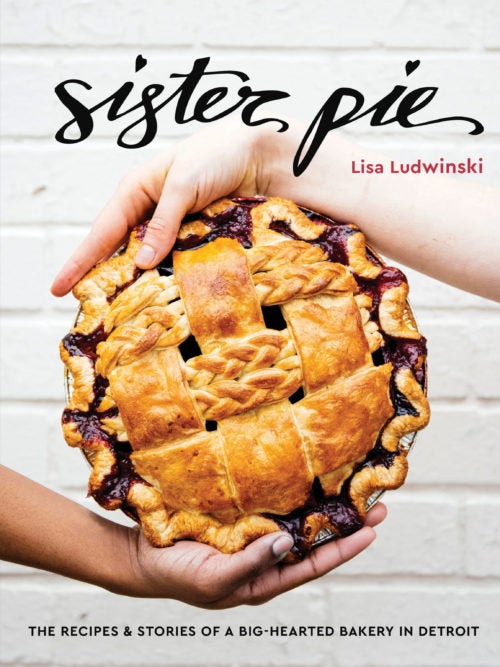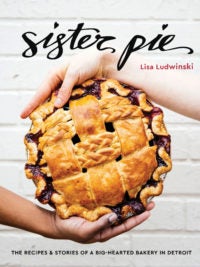




















I’m a key lime pie fanatic. I love the creamy texture, the puckery-tart flavor, and the slightly savory graham crust. Our version is made with regular ol’ limes, but there’s nothing regular about it. We add malted milk powder and a pinch of cardamom to the filling, which we pour into a nontraditional all-butter crust. Don’t worry— we haven’t forgotten about the graham cracker element. Instead of store-bought graham crackers, we use actual graham flour to make a magical dust, lending that signature crunchy bite. If you can’t find graham flour, substitute whole wheat flour. This pie is best straight from the fridge, and it’s essential to serve it with freshly whipped cream.
Directions
- In a large stainless steel bowl, combine the flour, sugar, and salt and stir to mix well. Place the sticks of butter in the bowl and coat on all sides with the flour mixture. Using a bench scraper, cut the butter into 1⁄2-inch cubes. Work quickly to separate the cubes with your hands until they are all lightly coated in flour. Grab that bench scraper once again and cut each cube in half. I always tell my pie dough students that it’s unnecessary to actually cut each cube perfectly in half, but it’s a good idea to break up the butter enough so that you can be super-efficient when it’s pastry blender time.
- It’s pastry blender time! Switch to the pastry blender and begin to cut in the butter with one hand while turning the bowl with the other. It’s important not to aim for the same spot at the bottom of the bowl with each stroke of the pastry blender, but to actually slice through butter every time to maximize efficiency. When the pastry blender clogs up, carefully clean it out with your fingers (watch out, it bites!) or a butter knife and use your hands to toss the ingredients a bit. Continue to blend and turn until the largest pieces are the size and shape of peas and the rest of the mixture feels and looks freakishly similar to canned Parmesan cheese.
- At this point, add the water-vinegar mixture all at once, and switch back to the bench scraper. Scrape as much of the mixture as you can from one side of the bowl to the other, until you can’t see visible pools of liquid anymore. Now it’s hand time. Scoop up as much of the mixture as you can, and use the tips of your fingers (and a whole lot of pressure) to press it back down onto the rest of the ingredients. Rotate the bowl a quarter-turn and repeat. Scoop, press, and turn. With each fold, your intention is to be quickly forming the mixture into one cohesive mass. Remember to incorporate any dry, floury bits that have congregated at the bottom of the bowl, and once those are completely gone and the dough is formed, it’s time to stop.
- Remove the dough from the bowl, place it on a lightly floured counter, and use your bench scraper to divide it into two equal pieces. Gently pat each into a 2-inch-thick disc, working quickly to seal any broken edges before wrapping them tightly in a double layer of plastic wrap. If you’re portioning for a lattice-topped pie, shape one half into a 2-inch-thick disc and the other half into a 6 by 3-inch rectangle. Refrigerate the dough for at least 2 hours or, ideally, overnight. When you go to roll out the crust, you want the discs to feel as hard and cold as the butter did when you removed it from the fridge to make the dough. This will make the roll-out way easier.
- You can keep the pie dough in the fridge for a few days or in the freezer for up to 1 year. If frozen, remove the dough and place it in the refrigerator to thaw one full day before you intend to use it. If you’re planning to make only one single-crust pie, wrap the discs separately and place one in the freezer.
- Make the Graham Dust: Preheat your oven to 325°F. Line a baking sheet with parchment paper. In a medium bowl, combine 1⁄2 cup of the malted milk powder and the graham flour, tapioca starch, sugar, and salt. Toss with your hands to mix. Add the melted butter and toss, using a silicone spatula, until the mixture starts to come together and form small clusters.
- Spread the clusters onto the parchment-lined baking sheet and bake for 20 minutes. Remove the baking sheet from the oven and place it on a wire rack to fully cool. The mixture will have baked into one solid mass. Break into 1-inch pieces and place them back in the bowl. Combine with the remaining 1⁄2 cup malted milk powder, then transfer, 1 cup at a time, to a food processor and process until you have a fine graham crumb. Set aside while you make the filling. You can make the graham dust up to 3 days in advance and store in an airtight container in the refrigerator.
- When you’re ready to assemble the pie, preheat your oven to 300°F. Line the baking sheet with new parchment paper.
- Make the filling: In a large bowl, whisk the lime zest, egg yolks, condensed milk, lime juice, salt, malted milk powder, and cardamom together until smooth.
- Place the blind-baked shell on the parchment-lined baking sheet. Brush the crimped edge with the beaten egg. Pour the lime filling into the pie shell until it reaches the bottom of the crimps. Transfer the baking sheet with the pie on it to the oven and bake for 25 to 30 minutes, or until the pie begins to look set around the edges and tiny bubbles rise to the surface. Remove the baking sheet from the oven and place the pie on a cooling rack. Once the pie tin is cool enough to touch, transfer the pie to the refrigerator until fully set, about 1 hour.
- Once the pie cooled and set, remove it from the fridge and cover the top with the Graham Dust. Slice the pie into 6 to 8 pieces, and serve with whipped cream.
- Store leftover pie, well wrapped in plastic wrap, in the refrigerator for up to 3 days.
Reprinted from with permission from Sister Pie. Copyright © 2018 by Lisa Ludwinski. Published by Ten Speed Press, an imprint of Penguin Random House LLC.

